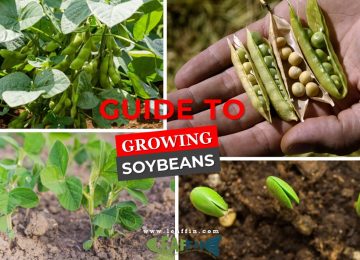Planting information:
When to plant will depend a little on your location, but generally garlic should be planted from late September to late October. We live in zone 4b and plant our garlic in mid-October. It doesn’t matter too much as long as you don’t plant too early (risk too much top growth) or too late (ground is frozen). Always use a nematode free source for your garlic seed.
Soil
garlic love well-drained sandy loam to loam soil with lots of organic matter. Add green manure crops in your rotation to increase organic matter in the soil. Take pride in how you prepare the soil. Garlic loves plenty of organic matter.
Seeds
Always select good size health with nice shape. In General clove size matter more than bulb.
Weeds:
Stay on top of the weeds. We do at least hoeing to make sure no weeds in the garlic in April & May You won’t get those nice large heads with a weedy garden. Mulch using grass clippings or leaves to help prevent weeds
Removing scapes: Cut off scapes as soon as they appear will increase the size of your garlic bulb.
Curing GarlicWhen the bottom 1/3 of the garlic plants leaves turn brown it is ready for harvest. Dig one up to be sure and check to see if the garlic has formed wrappers around the individual cloves. Cure garlic in a cool dry area for 4 to six weeks. In curing the energy from the leaves goes to bulbs as they dry. Hang the plant in bunches out of direct sun light with good air circulation with temp around 26C or 80F for two in dry region
and little more in humid region. If you don’t have good air circulation use fans.
Fertility requirements:
*Garlic is a medium feeder when it comes to nutrients. performing soil tests is preferable for large farms. You can apply composted manure in the spring when necessary. For small or home growers, the fish bone is effective at planting & kelp when the garlic is 8-10” tall.
How to plant:
*break apart cloves one or two days before your plant date. Plant garlic cloves (root side down) 2-3 inches below the soil, 5-8 inches apart in row and 8-16 inches between rows.
Mulching:
*mulch your garlic with a 6 inch layer of whatever mulch you can get ahold of. We have used soybean mulch with great success. Mulch applied too think can prevent garlic from getting through, whereas mulching too thin will let too many weeds through. It should look well covered but not excessively thick.
Waiting:
*Your garlic will spend the winter in a period of dormancy.
Springtime care:
*The majority of care that garlic requires comes in big bursts. Your garlic will poke up through the mulch in early spring and doesn’t really require any attention for a bit. Some people will use a fish or kelp emulsion and apply once a week in early spring. We have found this unneccessary. After a few weeks to a month your garlic will probably need some weeding attention and if it does look weak or thirsty, you may need to water and fertilize. Because we usually get enough precipitation in the spring, over the past 5 years we have only irrigated our garlic once. If it is a dry year your garlic will need about an inch of rain a week, although if you did a good job of mulching, moisture will stay in your soil longer. You will want to stay ahead of the weeds when your garlic is young, but after you have given it a good head start and your mulch does an adequate job keeping most of the weeds down, you shouldn’t need to weed anymore. Contrary to popular belief, garlic can deal with a few weeds once it is well established. Ideally you will want the water to shut off a week or so before harvest.
Harvest:
Your garlic will be ready to harvest in mid-July-mid August, depending on where you are and how the weather is. In 2012 when harvested our garlic on July 5th. This year we didn’t harvest until August 5th.
There are multiple ways to test when to harvest, but most importantly your garlic should look fully formed and plump. You will want to harvest when there are still 4-7 green leaves so you don’t shed to many wrappers. Use a spade instead of a potato fork to dig so you don’t stab your garlic to death.
Knock any excess dirt off from the roots, but no washing of any kind is neccessary.
Curing:
Tie garlic in bundles of 8-12 and hang in a well ventilated, shady spot. We use a high tunnel with a shade cloth and hang our garlic in double bundles on a wire trellis. A high tunnel works exceptionally well due to the airflow, and increased drying time. We have used our barn in the past and have had issues with molding due to bad air circulation and too much humidity. Many garlic growers use a drafty barn or something like it. Check on garlic after a few days to make sure it’s drying properly. After 2-3 weeks cut a few bulbs and see if they are done curing. The cut shouldn’t have a fragrance.
Grading:
*If you grow your own garlic you can save your best and biggest bulbs for planting. Otherwise this is not neccessary.
Storing
*Store garlic as close to 32% as possible. A cool, dark basement works fine. Humidity should be no higher than 70%.

